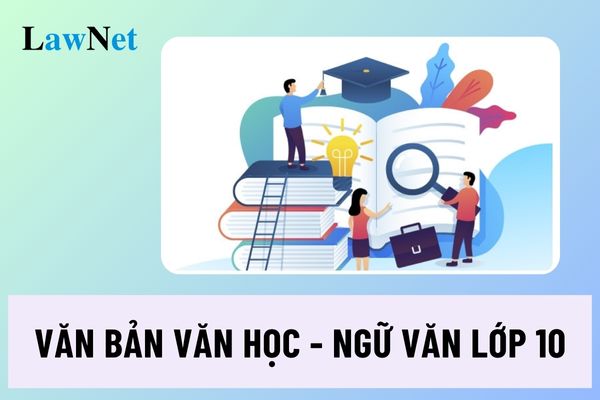What requirements must students meet when studying literary texts in 10th Grade Literature in Vietnam?
Currently, which education program for the Literature subject is being taught to students of grade 10 in Vietnam?
Based on the provisions of Article 2 Circular 32/2018/TT-BGDDT, the regulations are as follows:
The education program is implemented according to the following timeline:
1. From the 2020-2021 school year for Grade 1.
2. From the 2021-2022 school year for Grades 2 and 6.
3. From the 2022-2023 school year for Grades 3, 7, and 10.
4. From the 2023-2024 school year for Grades 4, 8, and 11.
5. From the 2024-2025 school year for Grades 5, 9, and 12.
Based on Section 1 of the Literature Education Program issued under Circular 32/2018/TT-BGDDT, the regulations are as follows:
I. CHARACTERISTICS OF THE SUBJECT
Literature is a subject within the field of Language and Literature Education, studied from Grades 1 to 12. In primary education, this subject is called Vietnamese; in secondary and high school education, it is called Literature.
...
Currently, 10th-grade students are studying the 2018 Literature education program.

What requirements must students meet when studying literary texts in 10th Grade Literature in Vietnam?
What requirements must students meet when studying literary texts in 10th Grade Literature in Vietnam?
Based on sub-section 2 of Section 5 of the Literature Education Program issued under Circular 32/2018/TT-BGDDT, after studying literary texts in Literature for grade 10, students must meet the following requirements:
(1) Understanding the content
- Be able to comment on the overall content of the text; analyze key details, themes, stories, characters, and their relationships within the integrity of the work.
- Analyze and evaluate the themes, ideas, and messages that the text aims to convey to the reader through its artistic form; analyze some bases to determine the theme.
- Analyze and evaluate the sentiments, emotions, and main inspiration expressed by the author through the text. Uncover the ethical and cultural values from the text.
(2) Understanding the form
- Identify and analyze some elements of epic and mythological stories such as space, time, plot, characters, the narrator's and characters' speech, etc.
- Identify and analyze some elements of the story such as characters, plot, third-person narrator (omniscient), first-person narrator (limited narrator), viewpoint, narrator's speech, characters' speech, etc.
- Analyze and evaluate the aesthetic value of certain elements in poetry such as words, imagery, rhyme, rhythm, contrast, lyrical subjects, lyrical characters.
- Identify and analyze some elements of a Cheo or Tuong drama text such as themes, anonymity, plot summary, characters, dialogue, methods of transference, etc.
(3) Relating, comparing, connecting
- Apply knowledge about author Nguyen Trai to understand some of his works.
- Identify and analyze the historical-cultural context presented within the literary text.
- Relate to identify close points in content between literary works from two different cultures.
- State the meaning or impact of the literary work on readers' conceptions, perspectives, thinking, and feelings; express personal emotions and evaluations about the work.
(4) Extended reading
- In one academic year, read a minimum of 35 literary texts (including texts guided for reading on the Internet) that are of similar genre and length to the studied texts.
- Memorize some favorite poems or passages from the program.
What is the scope of 10th-grade students' literary knowledge in Vietnam?
Also, in sub-section 2 of Section 5 of the Literature Education Program issued under Circular 32/2018/TT-BGDDT, the literary knowledge of 10th-grade students in Vietnam includes:
- Main inspiration of the work
- Stories, third-person narrator (omniscient), first-person narrator (limited narrator), viewpoint in the story
- Certain elements of epic and mythological stories: space, time, plot, narrator, characters, narrator's and characters' speech; the value and vitality of epics
- The aesthetic value of certain formal elements in poetry
- Some elements of a traditional Cheo or Tuong script: anonymity, themes, plot summary, characters, dialogue, methods of transference
- Historical or cultural, social context and the work
- Basic understandings about Nguyen Trai to help read and comprehend some of his typical works
- Proximity in content among literary works from different cultures
- Literary works and readers

